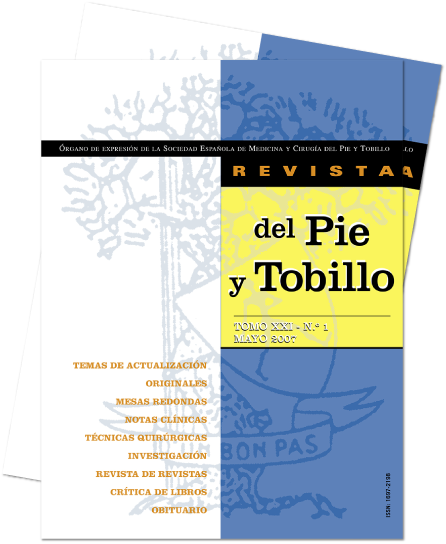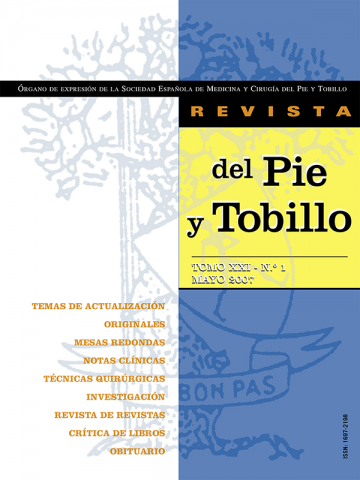Resumen:
Aunque algunos autores asumen la simetría durante la marcha, otros han obtenido diferencias entre ambos lados en diferentes parámetros. En este trabajo hemos analizado las diferencias en las presiones plantares registradas entre ambos pies al caminar.
Material y métodos: el estudio se realizó en 27 sujetos (edad media: 20 años ± 3,5), todos diestros, y se registraron las presiones plantares de ambos pies mediante un sistema de baropodometría electrónico (PDM 240).
Resultados y discusión: durante la marcha normal, los máximos picos de presión se producen en el retropié, seguido de las cabezas del segundo y del tercer metatarsiano. En los casos analizados se verifica una tendencia a que el valor medio –tanto de la presión máxima como de la promedio a lo largo del ciclo– sea mayor en el lado derecho, aunque solamente son significativas las diferencias en los valores promedio de presión a lo largo del ciclo bajo la cabeza del primer metatarsiano. La distribución de las presiones entre el retropié y el antepié es semejante en ambos pies; sin embargo, en la distribución de las presiones entre los cinco puntos de apoyo del antepié existe una tendencia, sin significación estadística, a una mayor participación de la cabeza del primer metatarsiano del lado derecho.
Abstract:
Although some authors assume the symmetry during gait, others have obtained differences between both sides in different parameters. In this paper, differences in plantar pressures registered during gait between both feet have been examined analyzed.
Material and methods: the study was carried out with 27 people (average age: 20 years ± 3,5) who walked, at a comfortable speed for each of them, on a flat ground while plantar pressures of both feet were registered by means of a pressure insole system.
Results and conclusions: during normal gait, maximum pressure peaks were observed at the heel, followed by 2nd and 3rd metatarsal heads. In the studied cases, there exists a tendency showing that the average value, of both maximum pressures and the average pressure along the cycle of gait, is higher in the right side, although only differences in average values of pressure throughout the cycle under the 1st metatarsal head are statistically significant. The distribution of pressures between the rearfoot and the forefoot is similar in both feet, however there is a tendency, without statistical significance, in the distribution of pressures among the five support points of the forefoot, showing a higher participation of the 1st metatarsal head of the right side.





